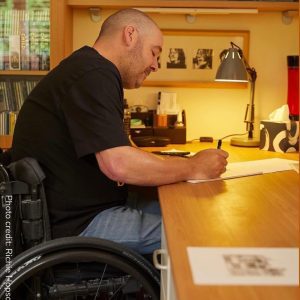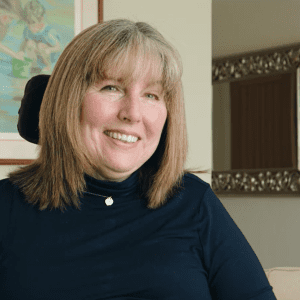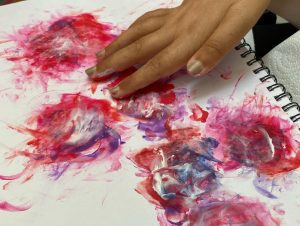Blog
Art As Therapy
Published in Summer 2024 edition of FORWARD magazine
Art therapy is often used as a powerful compliment to talking therapies, or as a therapy in itself. SIA’s counselling and wellbeing coordinator Stephen Brookes and occupational therapist Susie Woods, look at how to get started with art as therapy and what mental health benefits it can offer.
Those confronted with spinal cord injury (SCI) face innumerable challenges. A feeling of loss of control over our lives can make us feel threatened, creating shock, panic, fear, and anger, amongst other things.
The effects of SCI can undermine our sense of meaning, our self-confidence and individual well-being. In therapy we sometimes use art or other creative methods, alongside more traditional talking therapies, to help individuals express and begin to understand their experiences and how they may be feeling.

Any artistic form can be used as a healing resource, imaginary and artistic expression such as drawing, painting, sculpture, writing, singing, acting and even dance can help enhance the quality of individual lives by helping reduce feelings of anxiety, stress, pain, or depression. You don’t need to have any previous experience or even be good to feel the benefits.
Using art as therapy can help those who struggle to put their feelings into words and being creative can be part of discovering our own personal identity. When we create something, we put a part of ourselves into it and this can be a powerful tool in reviving the sense of independence that some may feel they have lost.
Whatever type of art you choose to try, the important thing is to not allow yourself to judge your work, let yourself be free with it, let your emotions flow through it. The aim isn’t to create a perfect piece of art, it’s to create an honest piece of art that reflects part of who you are.
Art as relaxation
Art can be a great way to relax. If you think your paintings or sculptures are too tight and controlled, this collection of tips and techniques should help you work in a looser style:
- Paint to music. Letting your creativity flow in response to music is a great way to let out feelings and relax.
- Finger paint. Finger painting isn’t just for kids – adults can enjoy it as well. Get your hands messy and really have fun spreading the paint around.
- Draw with your eyes closed. Not being able to see what you are drawing intensifies fluidity, intuition, touch, and sensitivity.
- Draw something HUGE. Moving around by getting your body, wheelchair and crutches involved can help release emotion as you’re drawing.
- Only use colours that calm you. Create a drawing or a painting using only colours that you find calming.
- Draw or create in sand. Drawing shapes and creating scenes in the sand, can be immensely relaxing and a great way to clear your mind.
- Colour in a design. Sometimes, the simple act of colouring can be a great way to relax. Find an adult colouring book or use a mandala for colouring.
- Draw outside. Working in the open air can be a fun way to relax and get in touch with nature while you’re working on art.
SCI Artists tell us what art has brought to their post-injury lives

Natalie Bignell: “Creating and experimenting with art has become an integral part of my life post injury. I have built custom-made paintbrushes that strap to my arms allowing me to develop the unique stylistic range and quality of movement my spinal injury defines. In the past year I have been challenging myself to play with larger scale work using various methods, including using my wheelchair to mark the canvas. Through my art, I not only reveal my impression of the world to others, but through that process I am compelled to conquer challenges, push boundaries, and discover the limitless possibilities of my creations”.

Dustine West: “I have always enjoyed art and have doodled for as long as I can remember. After my accident I struggled coming to terms with my disability but after some encouragement I took up drawing again. I had to make adaptations but quickly found a technique that worked for me and soon rediscovered my love of drawing. Since my accident, drawing has been an escape. It has been a great coping mechanism and has helped me come to terms with my disability. My art has allowed me to find purpose and has opened doors to new opportunities.”

Phillipa Wright: “As a C3 incomplete, my face is the only part of me with normal feeling, so as part of my rehab in Oswestry spinal unit I was encouraged to feel flowers on my cheek. When I got home one of my PAs brought me art materials and I never looked back. I started with finger dots and then swirls and swooshes. She taught me how to build a picture. I’ve had feedback to say my work could be used on home furnishings!”
Further information
The Association Of Mouth & Foot Painting Artists (MFPA)
This story appeared in the Summer issue of our magazine FORWARD. The only magazine dedicated to the spinal cord injury community. With fascinating and thought-provoking lifestyle features and the latest news and research, the high-quality publication covers topics such as health, daily living, employment, relationships and family, sport and travel.
If you would like to receive regular copies of FORWARD by post or email, visit our shop to subscribe.

